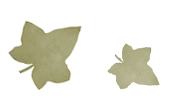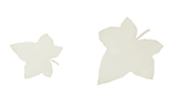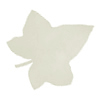


|
A perennial plant growing up to 3ft, with spikes of violet-blue flowers which extend above the foliage. The flowers contain high levels of volatile oil, and are harvested towards the end of flowering - usually picked in the mornings of high summer. Lavender is a well known bee and butterfly plant, and the fragrance is possibly one of the best known - used to scent baths and toiletries since the Roman times, and is regarded as one of the most versatile therapeutic essences. King Charles VI of France in 1387 is said to have chosen cushions stuffed with Lavendula spica (Spike Lavender) in his palace, both for the pleasant scent and to deter moths and other insects. It has been highly valued as a medicinal plant for centuries, being one of the herbs taken to the New World by the Pilgrims in 1620, and Culpeper (1616 - 1654) noted that it “is of a special good use for all griefs and pains of the head and brain...” The name derives from the Latin ‘Lavare’ - meaning to wash, and it was used to cleanse wounds, as well as being widely used in personal bathing and laundry washing. A French army surgeon, Dr. J. Valnet, used Lavender oil to treat war wounds and serious burns - indeed its analgesic, antibiotic and antiseptic properties make it an ideal choice for treating all kinds of skin wounds. Lavender has a long established tradition in folk remedies, from cosmetic waters to the bags used for scenting linen and keeping wardrobes and cupboards smelling fresh and moth free. It is an insect repellent - and as a remedy for post insect attacks, the oil is definitely one of my first choices to apply to a mosquito bite or insect sting. The oil is both soothing and reviving, and is useful at relieving fatigue - yet is also superb for treating insomnia and ensuring a peaceful, relaxing sleep : add a few drops of the essential oil (mixed with a base oil or milk) to your evening bath; add a few drops of oil straight on to your pillow case; or use the flowers to make a herbal bedtime cuppa to remedy insomnia. Lavender flower tea can also be drunk during the day to relieve headaches and nervous tension. The wonderfully fragrant Lavender flowers are also the perfect addition to a herbal sleep pillow. Lavender is a valuable treatment for colds, throat and chest infections, and is an effective antiviral agent - try a steam inhalation with a few drops of the essential oil, or massage a little of the oil into the throat (externally) to remedy a ticklish throat. A strong infusion of the lavender flowers can be used as a tonic mouthwash and is not only great for the teeth and gums but will also sweeten breath. The essential oil of Lavender should be part of everyones first aid kit - it’s certainly earned a life long membership to mine - it has a wide range of uses, from everyday skin problems such as acne, dermatitis, dandruff, inflammations, bruises, insect bites and stings, sunburn (dilute in water for a soothing lotion), wounds, psoriasis, and athlete’s foot, to the more troublesome cases of headlice, ringworm, and worms. It is a wonderful painkiller : add to a base oil to make a relaxing massage oil, or use neat to soothe into arthritic joints or sore muscles, sciatica, rheumatism pains, sprains and strains, and is a perfect oil to treat earache - simply rub the oil around the base of the ear and behind the ear, it really is the best earache remedy I’ve tried.
Add the essential oil to the bath, or to a carrier oil and massage in to the abdomen to relieve cramps and ease PMT - the fragrance will help lift your mood too - incidentally, Lavender is a valuable antidepressant. It is also effective at treating shock, and is an effective nerve relaxant - try a herbal infusion of the flowers to drink; add a stronger infusion to a bath or footbath; or use the essential oil to dap on your temples, pulse points, or even just smell the fragrance. The Spike Lavender, L. spica, is used in pharmaceutical preparations for veterinary practices as a preventative of disease or infection, and for treating cases of incipient paralysis, rheumatism and arthritis, and to get rid of lice. The True or Common Lavender, L. angustifolio, L. officinales, or L. vera, is generally considered the most important medicinally, and is the most well known variety. A non-irritant oil it is very rare for people to have an allergic reaction to the True Lavender - and those that do tend to be hay fever sufferers, or people from families with a long history of allergies. ! Avoid high doses in pregnanc ~ especially if you have a history of miscarriage ! |
|

Gaia's Garden Library
Non Fiction Section : Gaia's Garden Herblore | Susun S. Weed Articles | Articles and Musings
Fiction Section : Short Stories & Prose| As Told
By Cat | Public Domain Texts| Poetry
Shop | Library | Gallery | Forum | Contact | Links









 For
headaches and migraines, massage the oil onto your
temples, you can also apply as it to the forehead,
behind the ear, or back of the neck. Another wonderfully
effective remedy is to add a few drops of essential
oil to a bowl of very cold water, soak a cloth,
wring out, and apply as a compress to the forehead
or nape of neck - or better still, alternate between
the two, resoaking the cloth when it starts to warm
up. (Peppermint is another excellent oil to use
in this way).
For
headaches and migraines, massage the oil onto your
temples, you can also apply as it to the forehead,
behind the ear, or back of the neck. Another wonderfully
effective remedy is to add a few drops of essential
oil to a bowl of very cold water, soak a cloth,
wring out, and apply as a compress to the forehead
or nape of neck - or better still, alternate between
the two, resoaking the cloth when it starts to warm
up. (Peppermint is another excellent oil to use
in this way).